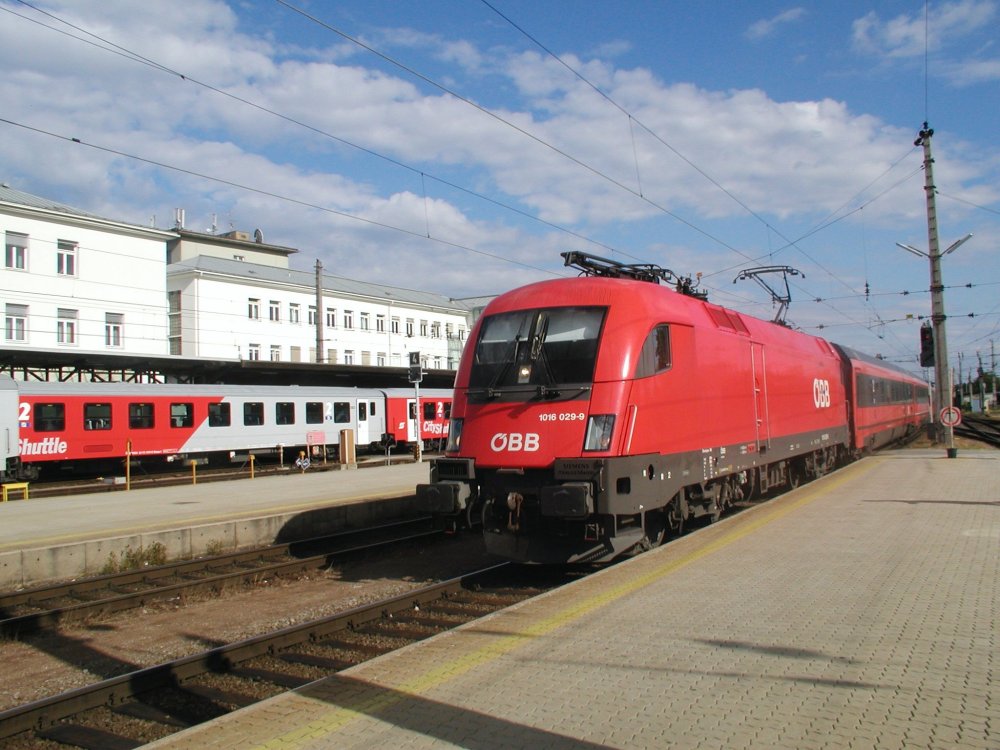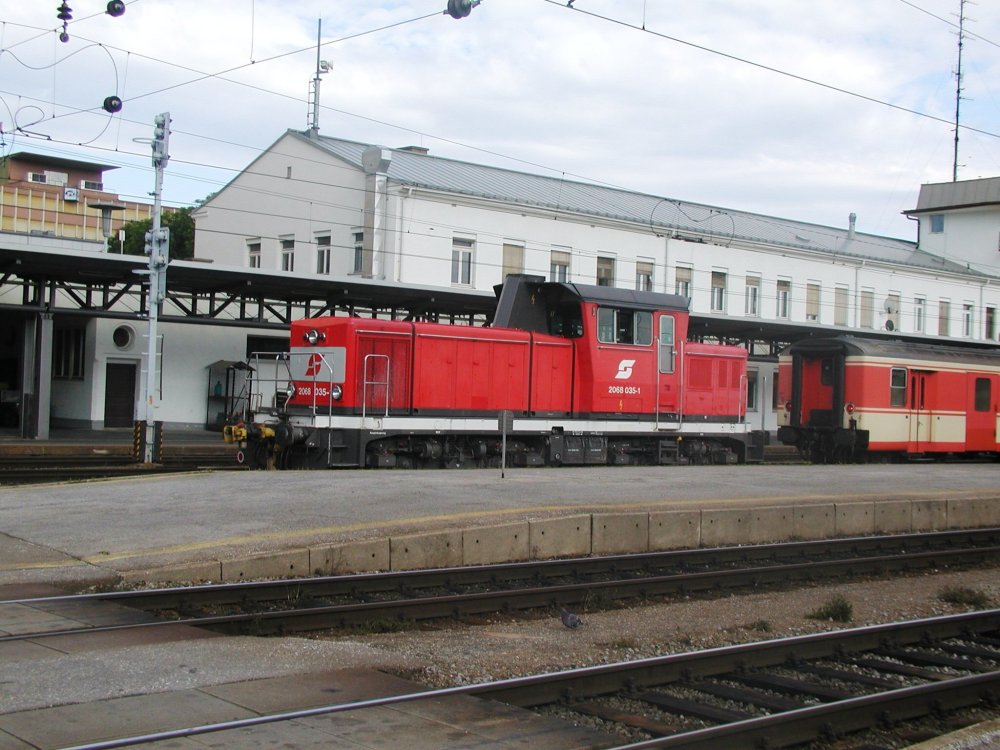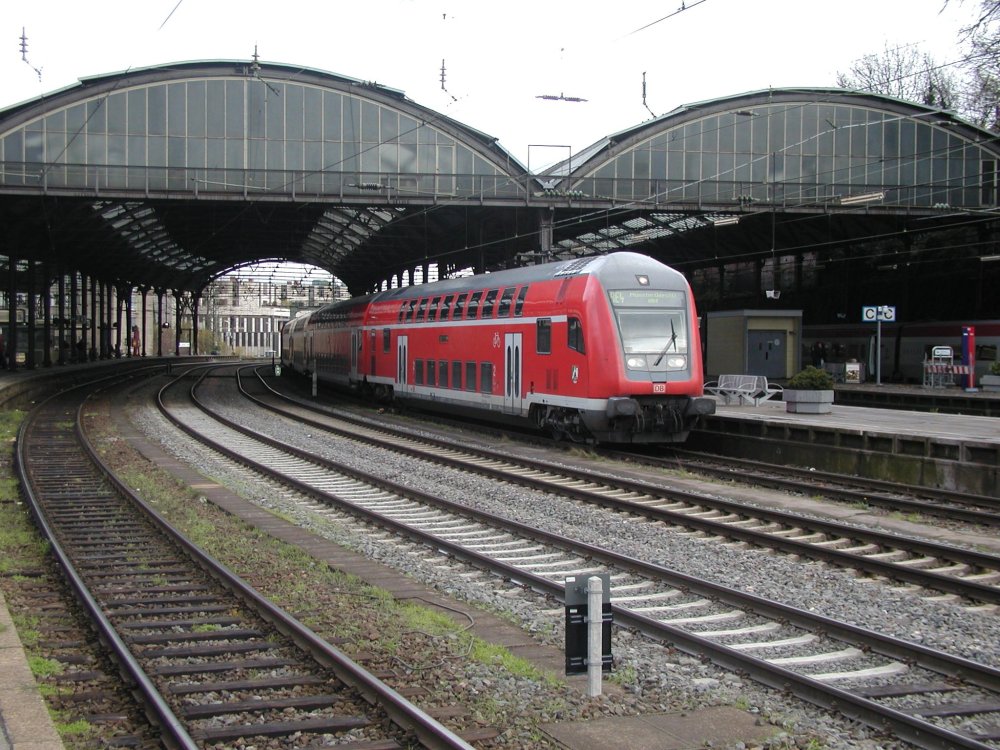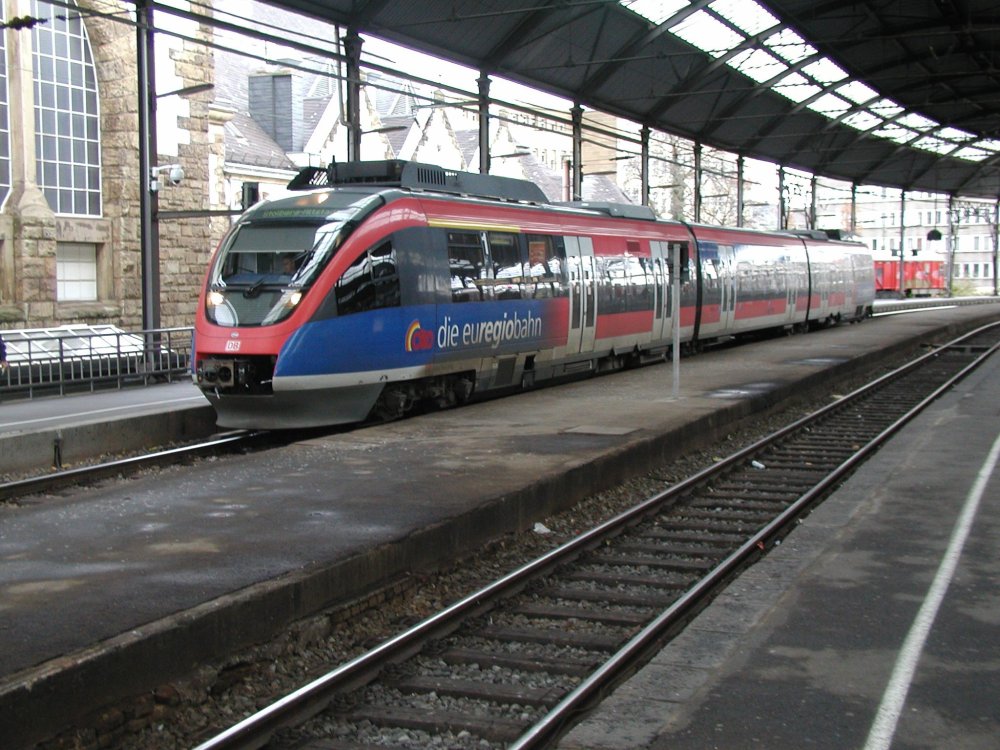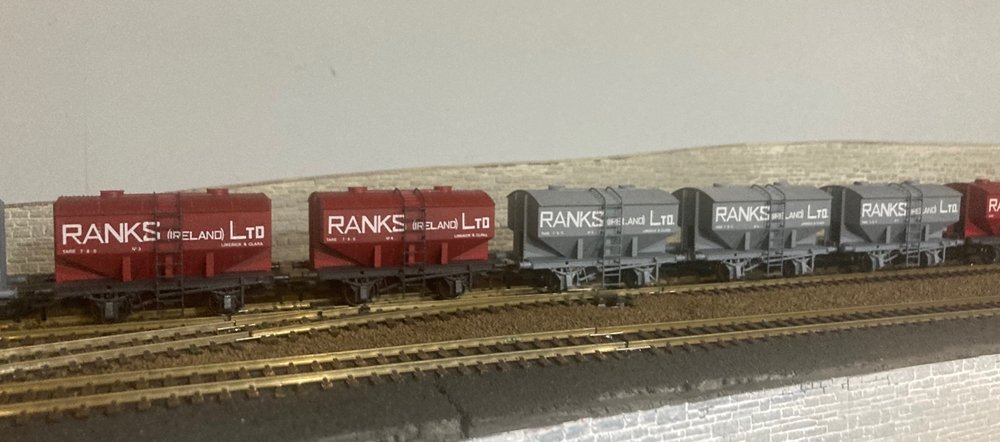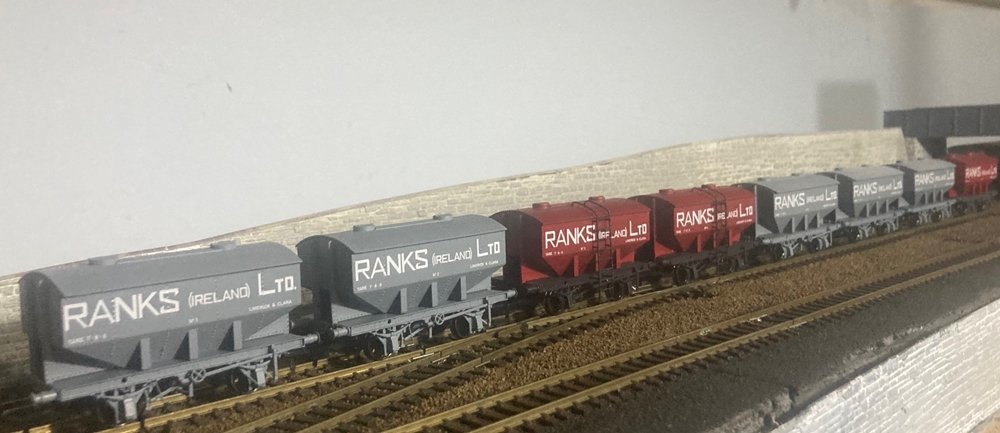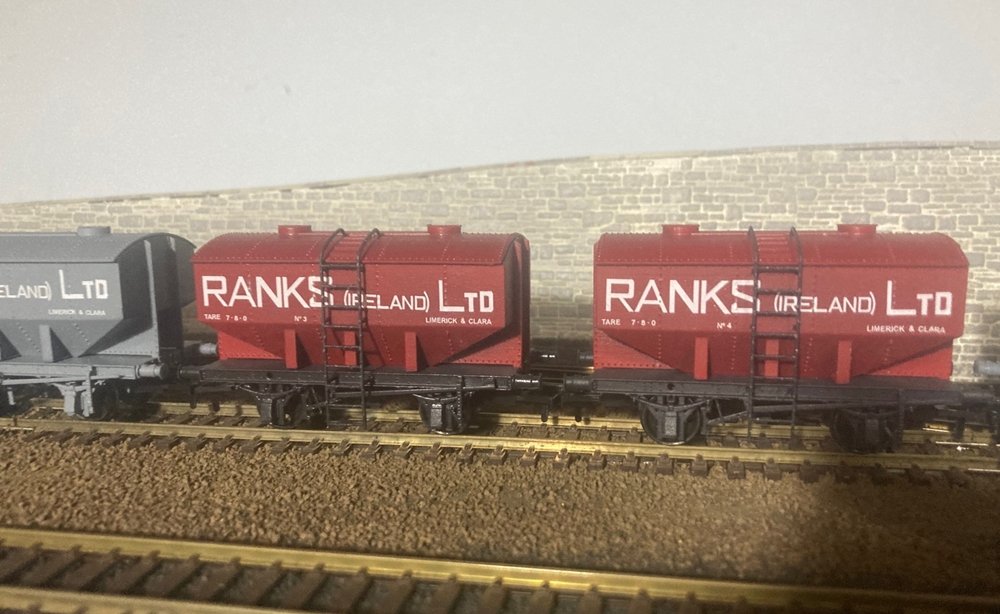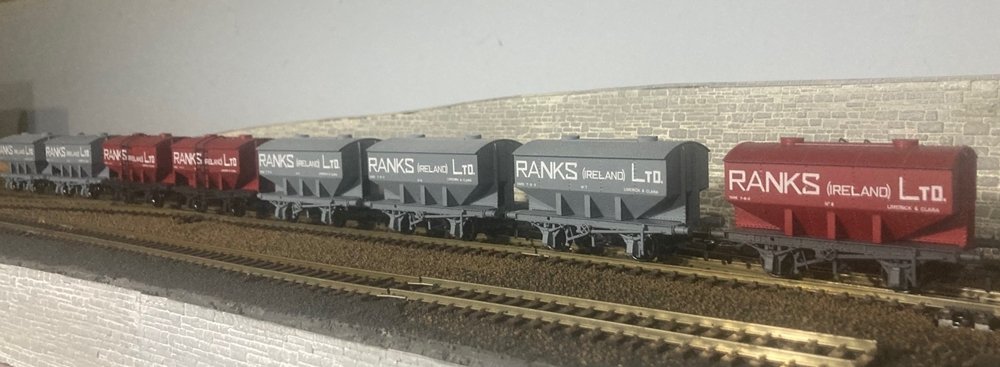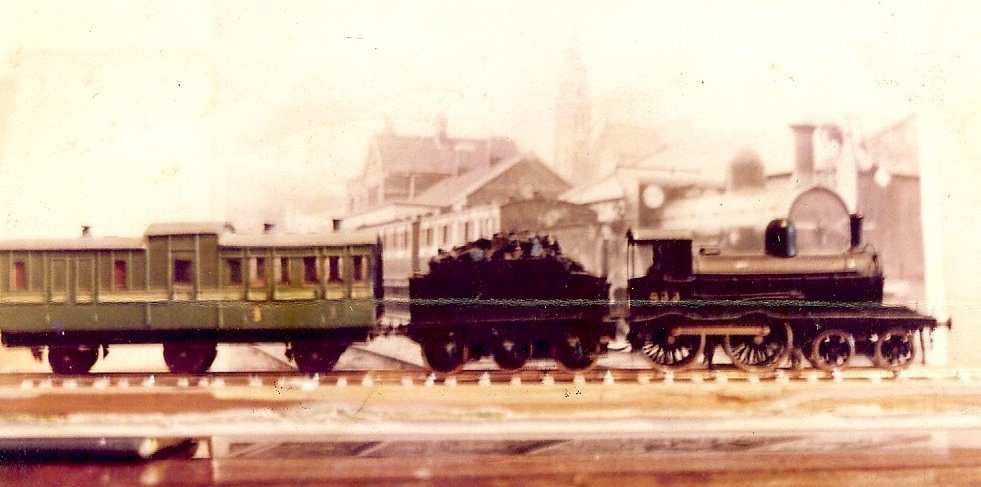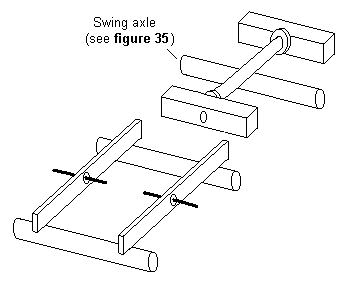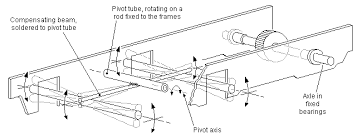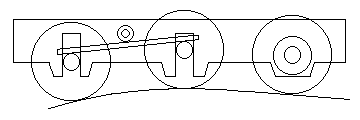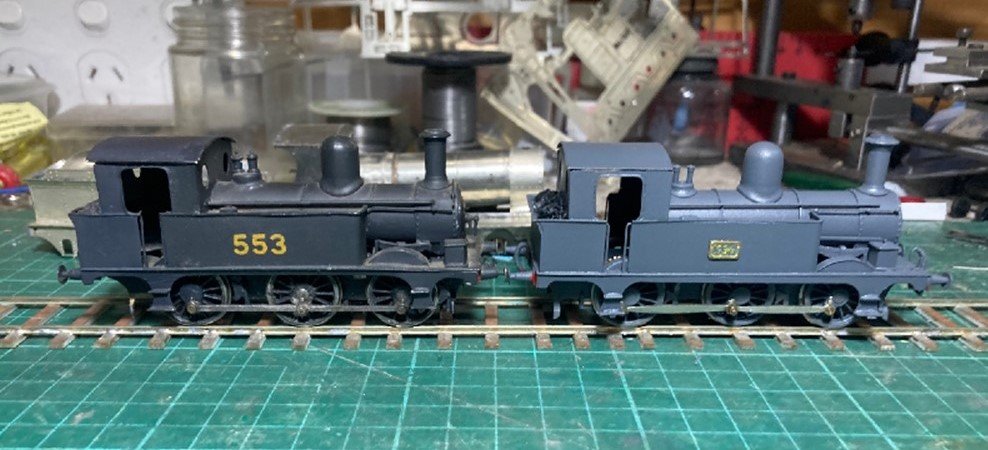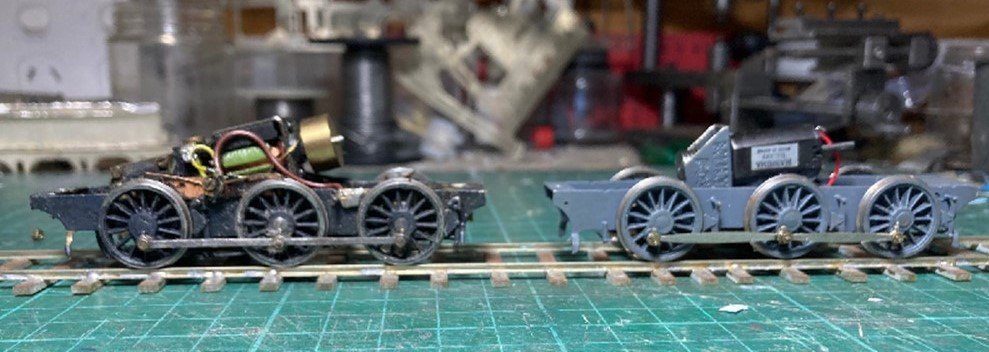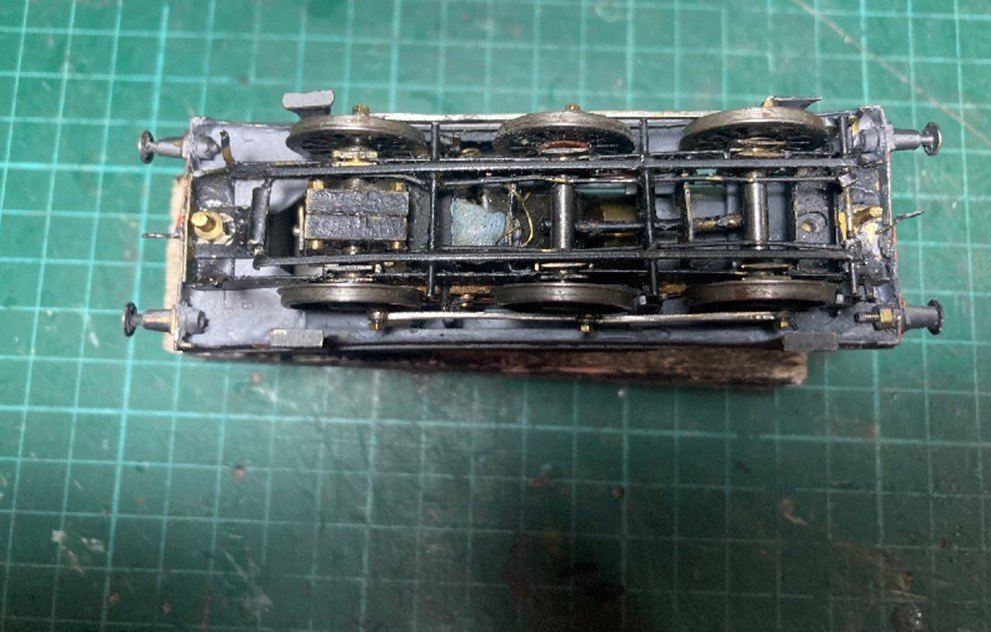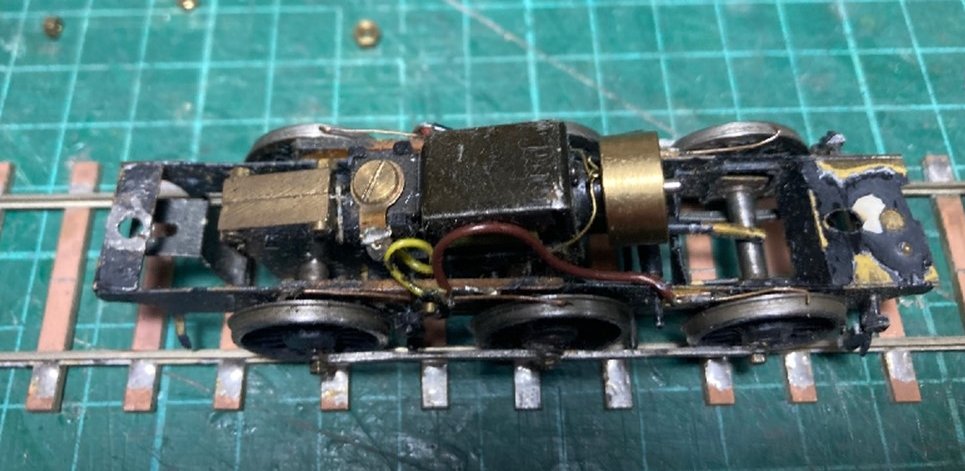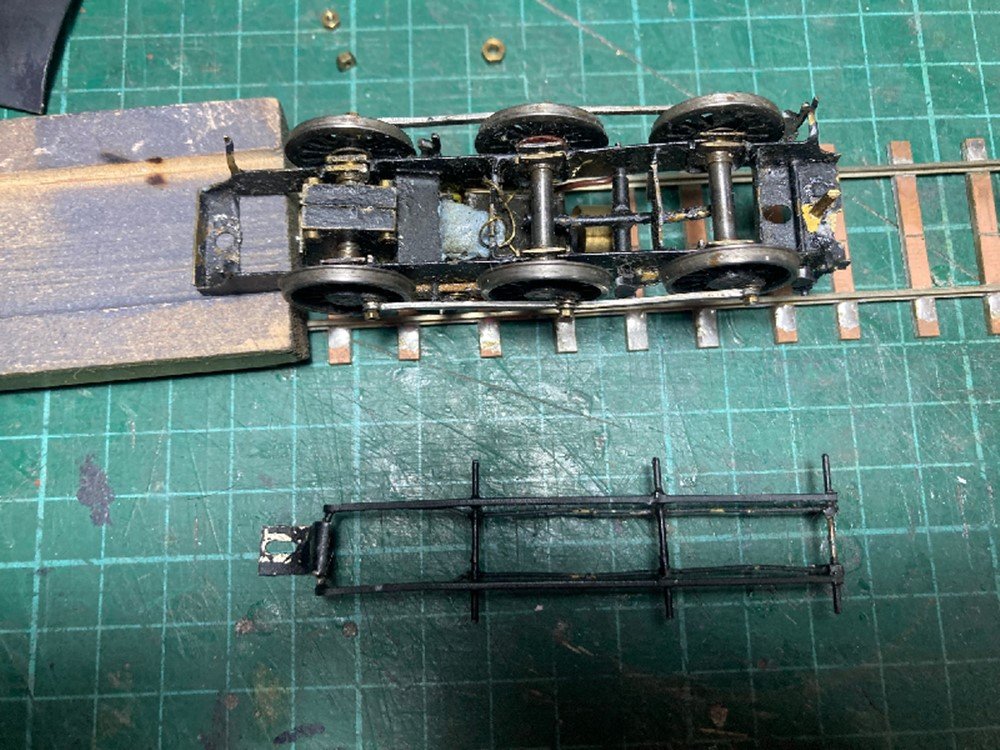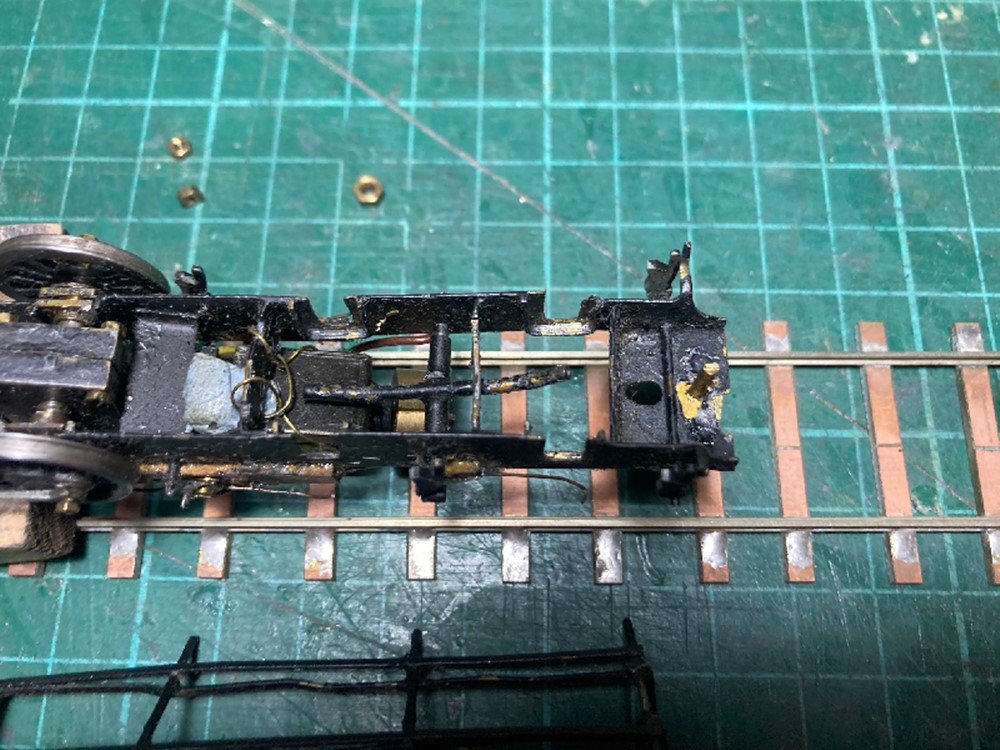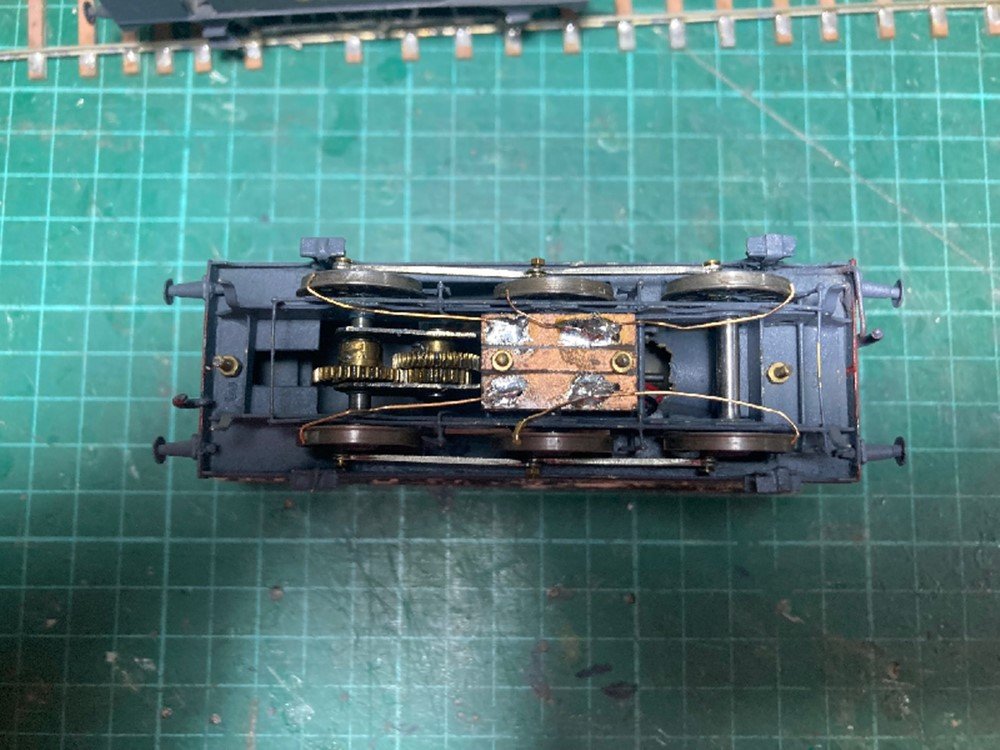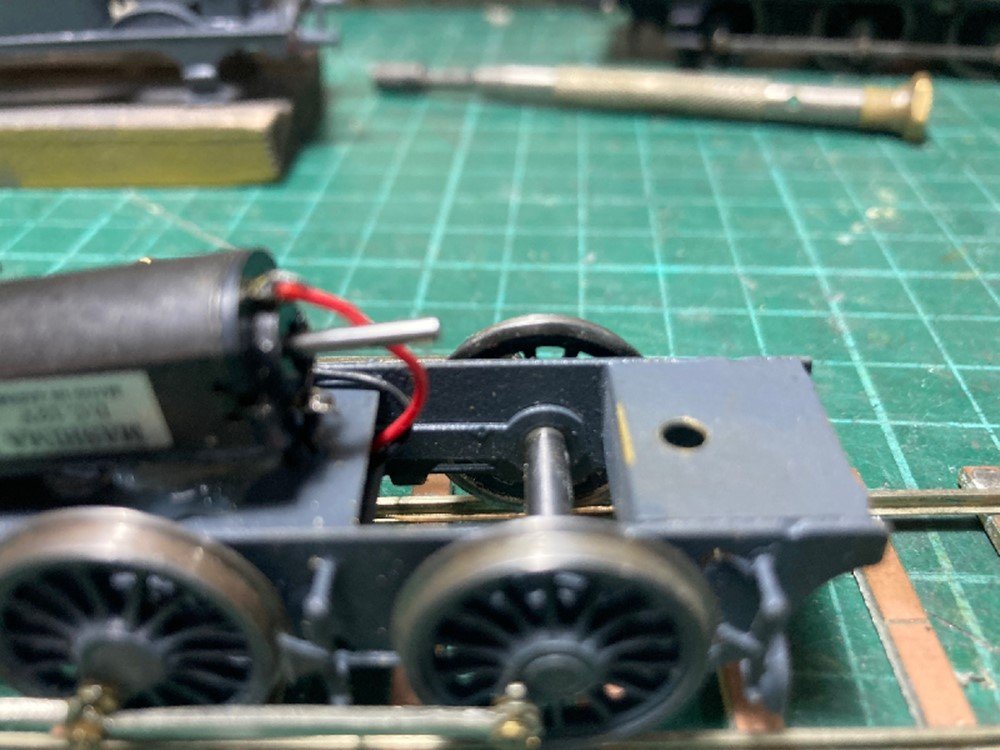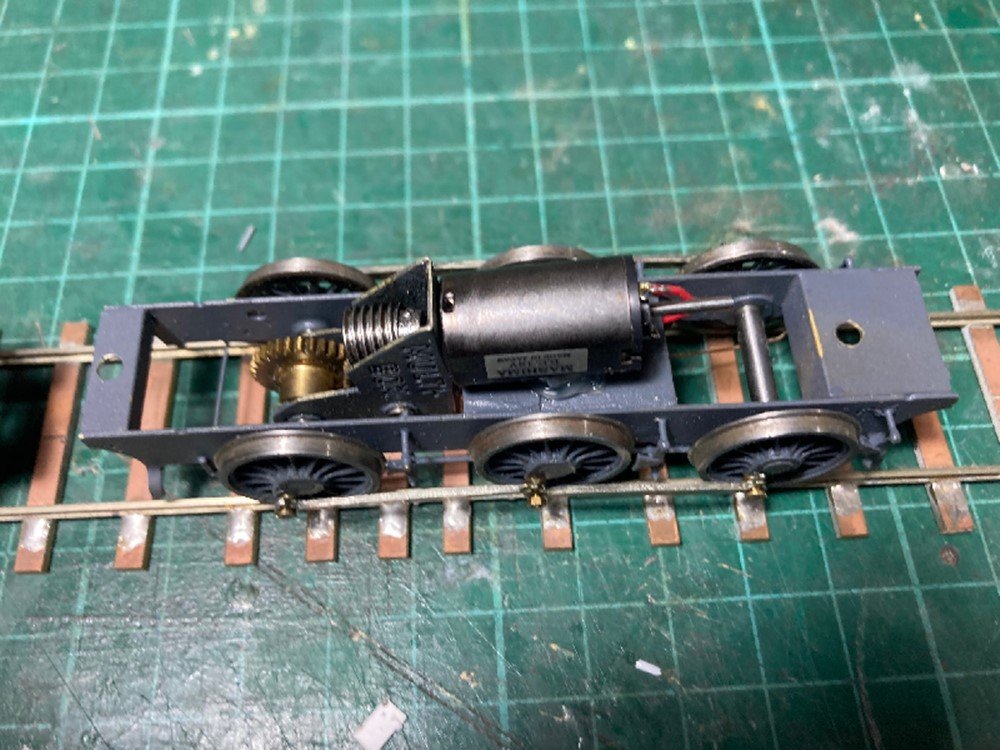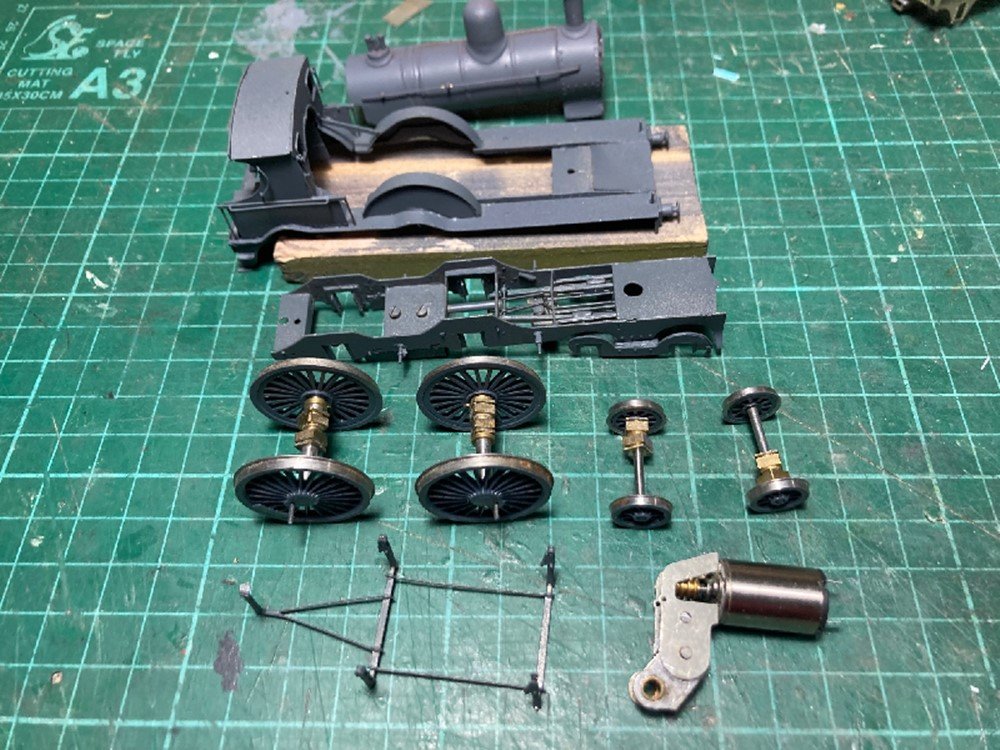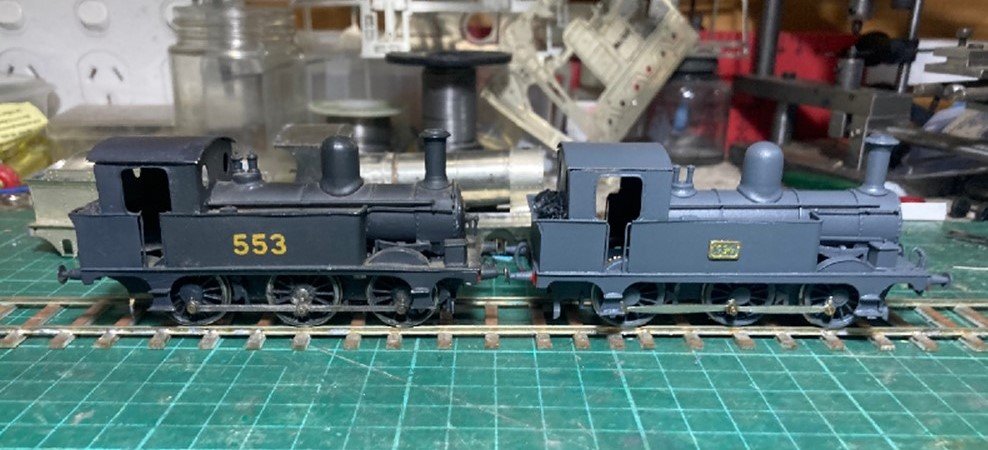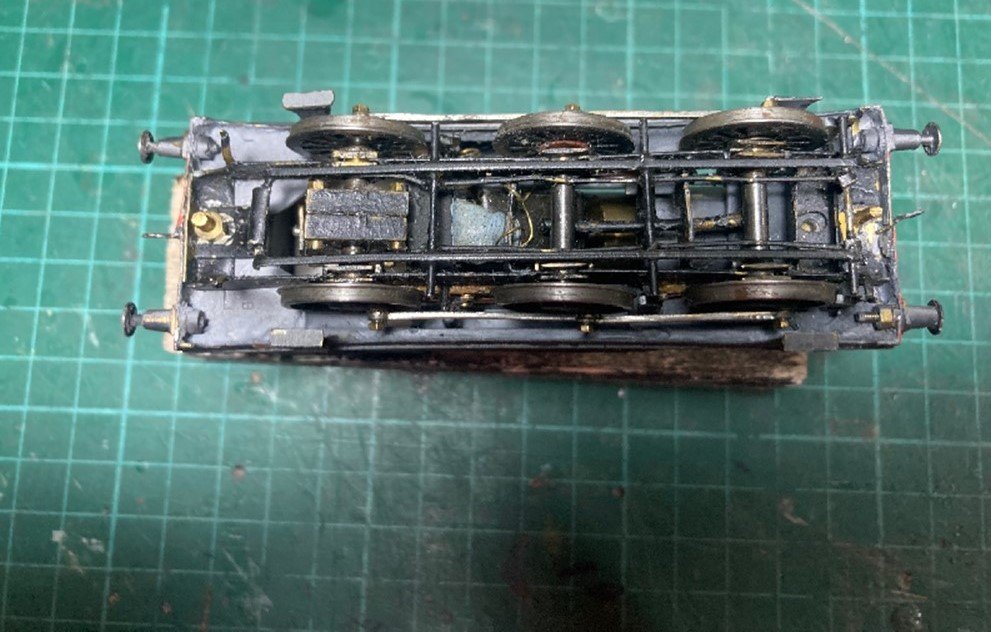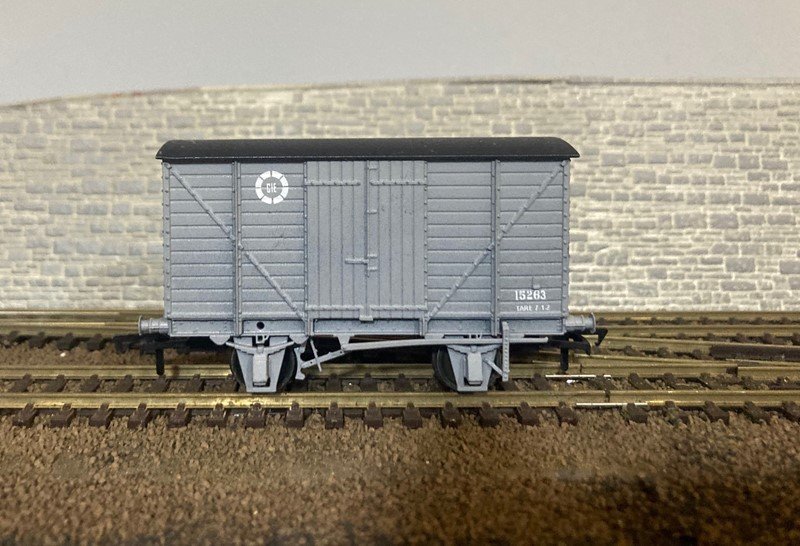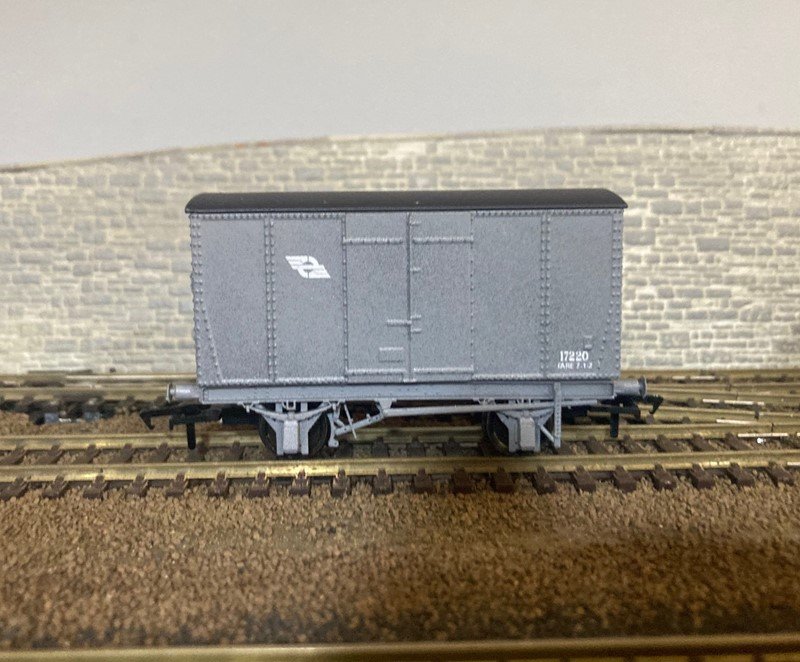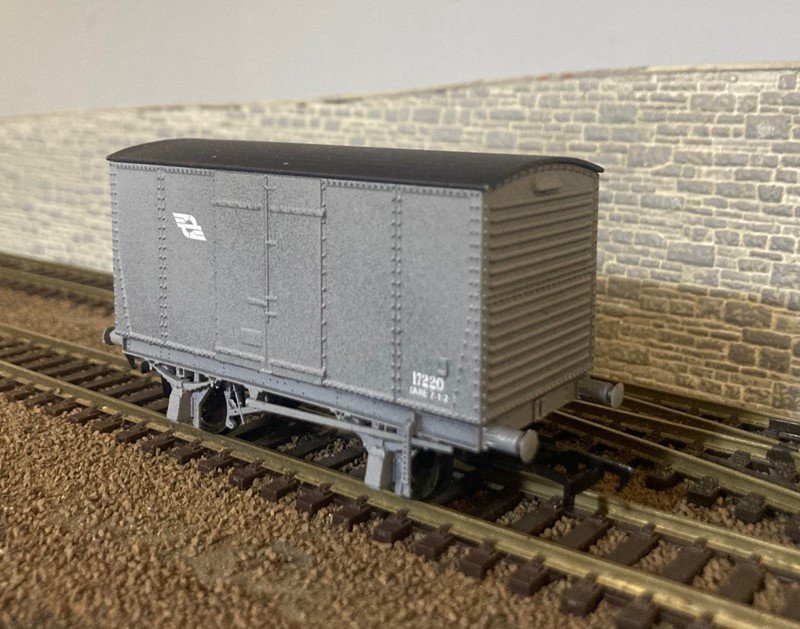-
Posts
4,883 -
Joined
-
Last visited
-
Days Won
119
Content Type
Profiles
Forums
Events
Gallery
Blogs
Community Map
Everything posted by Mayner
-

Ernies Massive Irish 1930's to 2005 Photo Archive
Mayner replied to Glenderg's topic in Photos & Videos of the Prototype
There were several failures on that particular tour another Midland 0-6-0 worked the train to Sligo with a B121 replacing steam for the Eastbound leg of the Tour including the Ballaghadereen Branch. I think there is a photo of the train behind a J18 at Tubbercurry in "Rails through the West -
My impression is the shiny out of the box look of some Continental especially Germanic layouts is not unrealistic, some of the stock looks straight out of the box. National pride and the drier Continental Climate helps
-
Sounds nice in theory particularly if you own/control the land with plenty of readily available narrow gauge equipment. An acquaintance in the UK built a 2' gauge line on an abandoned BR line beside his property https://www.28dayslater.co.uk/threads/mold-train-station-flintshire-wales-august-2020.124923/ getting started tends to be easy part, the real challenge is establishing sufficient resources (time, money, people) even to maintain and operate a short narrow gauge line. The Mold narrow gauge line was a private railway, the owner whose main interest was in telecommunication was an active volunteer on a number of hertiage railways and just did not have the time or resources to maintain or operate his own railway, a situation not dissimilar to my own layout's
-

Ernies Massive Irish 1930's to 2005 Photo Archive
Mayner replied to Glenderg's topic in Photos & Videos of the Prototype
The Dromod photo is an interesting one the broad gauge train includes a breakdown crane possibly for the 1950 transfer of 13L one of the Passage locos to Inchacore for an 'overhaul" that never took place instead 13L was scrapped. No 4T a Keir Stewart was transferred to the C&L in 1941 and appears to have remained on the C&L until scrapped following closure -
During the last 20 years the Grand Canal Dock area has been transformed to some of the most valuable real estate in Europe on the back of Government (tax) incentives to encourage the IT giants to set up their European headquarters in Dublin, this resulted in the whole sale re-development of the area including the 're-development" of urban renewal projects carried out during the 1980s & 1900s I worked in a relatively new (post 1990) neo-Georgian office block that had an excellent view over the "Boston Yard" about 20 years ago, the complex was demolished and replaced by a high rise steel and glass box during the past 10 years, in stark contrast to the urban decay that blighted the area during the 60s and 70s with the run down of port operations and associated industries on the South Quays and in Grand Canal Dock.
-
All 10 Ranks wagons completed with ladders fitted and ready to go into traffic. The ladders are quite resilient printed in the same resin as the wagon, the ladders literally plug into slots in the body and chassis. One of the next jobs is to complete the scenic works/buildings and structures on this layout, before re-locating it from the workshop to the house in order to start work on a "permanent' layout I have been planning for the best part of 10 years, just maybe!
- 392 replies
-
- 13
-

-

-
The Wagon Works has (almost) completed the rake of Ranks wagons, with the painters finishing the grey (post 64) version of the wagons last week, just to make things interesting the wagons are individually numbered (just about readable in 4mm) Wagons 1-8 3-4 Late 1940s onwards red. Wagons 8-1! Models are finished in with an aerosol flat clear which also protects the decals. I started using Testors "Dullcote" for finishing American N Gauge locos and stock (after repaint and decals) during the early 90s and use an aerosol in preference to varnish (air-brush application) for 4mm and large scale models. I settled on Gunze "B523 Mr Super Clear UV cut as Testors 'Dullcote" is no longer available.
- 392 replies
-
- 10
-

-

-
There is a story that during the late 50s early 60s that a local dignitary possibly the Captain of the Golf Club or Lifeboat unable to sleep went into the shed and shut down the Rosslare Harbour Pilot loco a C Class. Apparently an instruction was issued following the incident for loco crews to lock the loco/shed before leaving the loco with the Pilot loco unattended ticking over. There was an interesting UK magazine article during the 1990s on the challenges of maintaining the BR Class 24/25 Sulzer Type 2 locos, cylinder glazing leading http://coxeng.co.uk/engine/bore-glazing-and-polishing-in-diesel-engines/ from prolonged idling was a major problem with these locos, leading to poor engine performance and oily exhausts. The problem was almost institutional, apart from leaving engines idling between duties and overnight, apparently the problem began to set in as engines were run-in and tested before release to traffic after overhaul. From a modeller viewpoint an ex-works or recently overhauled loco with oil streaks and stains around the exhaust and down the sides of the loco.
-
Seems to have been much the same as when I first joined a model railway club in the 1970s. The club demographics basically broke down into a group of Creative Modellers some of whom modelled Irish railways to be different, a larger group who mainly collected British, Continental or American ready to run and the Elder Statesmens' some of whom were highly accomplished modellers who mainly modelled the Big Four. The people who modelled/collected Continental or American models did so mainly because of superior running, higher quality (and potential re-sale value) compared to British Outline As a Junior Member I attempted to model Irish railways with the encouragement and support of the creative modellers and the Elder Statesmen A lot of Irish people who ended up modelling/collecting British/Continental and American because they simply did not find Irish railways as appealing or exciting as overseas railways. I remember one of our members (a GNR enthusiast) writing of his experiences growing up in Kilkenny during the 1950s finding the steam hauled CIE passenger trains that served his city dull and boring, though Waterford's varied roster of GSWR 4-4-0s and the writings of Jack O'Neill paints a completely different picture, it all depends on perspective. Personally the most encouraging thing is the enthusiasm of the younger members of this Forum who are actively developing and improving their modelling skills and the support shown by the more experienced modellers.
-
Railtec recommend DecalFix for applying their transfers on surfaces with raised detail advising that "MicroSet and MicroSol are best avoided", a statement which I found to be true! Railtec transfers appear to be less permeable than conventional waterslide transfers or decals with Micro Set or Micro Sol applied on top of the transfer having little or no effect. The other point to watch is that its important to remove excess DecalFix from a model as it can result in staining/streaking particularly if applied on a matt or satin surface, one of the reasons for stripping down and re-painting the red-Ranks wagons.
-
The red is a custom mixed automotive satin aerosol (matched to a Duplicolour Ford Red which was out of stock. I usually paint models in a gloss or satin before applying waterslide transfers/transfers, then finish with a matt or satin clear spray lacquer. Transfers/decals adhere better to a gloss or satin than a matt base and helps make the decal film look less obvious by reducing light reflecting between the film and the model substrate.
-
I commissioned Railtec Transfers to prepare a decal set for the Ranks Ireland Grain wagons, the biggest challenge was to get the transfer film to bed neatly around the raised rivet detail on the wagon bodies. The first attempt soaking the decal in water and using Humbrol DecalFix as a setting solution as recommended in the instructions ended in disaster, requiring a complete strip down and re-paint. Second attempt I used DecalFix both as a soaker and setting solution for the larger decals, soaking smaller decals in water. The wagons are part of an batch of 8 in both the red and grey schemes each with individual running numbers 100% of the Ranks Ireland Wagon fleet! I applied the "Ranks" "Ltd" and "(Ireland) decals separately. 1st applying/floating the "Ranks" decal into place using a fine paint brush to separate from the backing paper, aligning with the brush and tooth pick before using a paper towel as blotting paper to remove excess solution, I then left the Ranks decal to set for several hours before applying the Ltd in approximately the correct position followed by the (Ireland) before finally aligning the Ireland & Ltd. Its important not to touch or disturb the decals for several hours after application as the Decalfix appears to form a slippery film between the decal and substrate until it completely dries out or you risk loosing the decal! I soaked the Tare, Limerick & Clara and No4 markings in water with DecalFix as a wetting agent. I will leave the model for approx. 1 week to completely dry out before applying a clear flat lacquer to seal the model, to minimise the risk of fogging or blistering as a result of trapped moisture between the decal film and substrate.
- 392 replies
-
- 12
-

-

-
In its final years the Tralee and Dingle was described as the 'last piece of adventurous Railroading East of the Rockies" There are maps and photos of the railway including Castlegregory Junction and Castlegregory Station. https://transportsofdelight.smugmug.com/RAILWAYS/IRISH-RAILWAYS/THE-TRALEE-DINGLE-LIGHT-RAILWAY/i-vxV4Mgq/A If you want to go deeper "The Dingle Train" Plateway press 1996 is a good read. covers the history of the line operation and folklore. https://www.abebooks.com/9781871980271/Dingle-Train-David-Rowlands-Walter-1871980275/plp
-

MGWR Passenger and Goods Stock - is there a need?
Mayner replied to 2996 Victor's topic in Irish Models
I like the way you phrased the question! In my experience (as a manufacturer) its unlikely to be commercially viable to produce 4mm kits or rtr models of MGWR locos and stock (particularly 21mm gauge) due to the very low level of demand. While I have plans to produce some MGWR 6 wheel coaches and another loco, you are potentially looking at a 2-3 year lead time if I don't get sidetracked and live long enough. Unless you have CAD or 3D modelling, scratchbuilding a coach or a wagon is probably the best option as it gives you control and achieve progress. Richard Chown's 7mm Broad Gauge Layout was first exhibited with two locos, two coaches and a hand full of wagons everything scratchbuilt before expanding into a large modular layout. Producing CAD work for photo engraving or use with a Cameo Cutter or Models for 3D printing can involve a considerable investment in time and software before producing a useable result. In a way I have gone backwards since I first set out to model the Midland in 21mm gauge during the early 1980s, 533 and the 6 wheeler were mainly modelled in plasticard, before I got distracted by the arrival of Studio Scale Models and MIR kits of non-MGWR locos and stock, only clawing my way back 30 years later with the Ks and 4w van kits. I made the mistake of building the 6 wheeler from the drawing in Model Railways without checking the scale which was slightly larger than 4mm. The coach body was basically a box with windows, the beading plasticard strip, not dissimilar to the techniques in the Jenkinson book. -
I have not used it myself, but some builders and chassis kits use what's described as "rigid beam suspension for all axles" using the swing axle arrangement. Highly recommended by CLAG for 0-6-0, 04-2, 2-4-0 and the most suitable for a 2-2-2 The High Level Dean Goods chassis and Arthur Kimber NER Tennant 2-4-0 use this arrangement, the leading (non driven) "swing axle" with the gearbox driving on the trailing or middle axle. I use the 'swing axle" with a fixed driving axle for compensating 0-4-0s and 4-4-0 tender locos.
-
Both the 60:1 and 80:1 gearbox and High Level 10x20 FE or 12X19 C (both 17,000rpm) motors should be suitable for a loco like an E on a fiddle yard to terminus layout. 80:1 should result in a slightly lower top speed than a 60:1. 108:1 is only really suitable for a shunting loco like a Pug, 03 or 08 diesel
- 309 replies
-
- 1
-

-
- mgwr
- 21mm gauge
-
(and 1 more)
Tagged with:
-
No springs are required with a compensated chassis. In its simplest form the driven axle is fixed, the floating axle/s are free to move up and down/rock from side to side supported by a compensation beam. There are more complex alternatives including springing http://www.clag.org.uk/41-0rev.html#section15 but beam suspension works fine for me.
-
I though it would be useful to post my experiences assembling the SSM (TMD) MGWR E 0-6-0T kit due to recent interest in the kit on the forum. The SSM MGWR 0-6-0T was a relatively early etched kit and a pioneering model as the first Irish 4mm etched kit. The design of the kit has more in common with pressed metal kits such as the Leinster Models O gauge kits, basically a set of scratchbuilders parts to assemble into a locomotive as opposed to the more complex later kits like the SSM/TMD J15 which featured slot and tab assembly, half etched relief detail (rivets, beading), overlay parts and assembly jigs. The kit was originally supplied with a brass chassis with fold up frame spacers etched from the same thickness of metal as the body. The chassis had hornblock cut outs (slots) as opposed to bearing holes which simplified assembling the kit with a sprung or compensated chassis. Some modellers experienced problems with derailments when they assembled the kit with the rigid chassis as the frames twisted when the chassis was bolted to the body at the front and rear frame spacers. The kit was later supplied with an nickel silver chassis which incorporated beam compensation on the leading and driving (middle) axle rather than conventional bearing holes. 553 assembled 1985/6 rebuilt in CIE condition1993. 556 completed 2021. 553 Brass Chassis Sharman wheels 40:1 Sharman gearbox Anchorage DS10 motor 556 N/S Chassis Gibson Wheels, Branchlines 2 Stage Multibox 80:1 state of the art 1985 Motor and gearbox state of art 1990s Sharman wheels no longer available! Underside 553: Chassis compensated all wheelsets removable for maintenance and cleaning, retained by keeperplate/brake pullrods, chassis and keeperplate retained by 8Ba nut and bolt at rear buffer beam only. Chassis is fitted with wiper pick ups which bear on top of wheel thread. Tight clearance between crankpin nuts and valence/steps 21mm gauge. I appear to have replaced the original cast buffers with sprung brass buffers during 1993 re-build. Ideally I should replace Anchorage motor and 40:1 gearbox with a drive train similar to 556 553 top view: Wiper pick ups mounted on PCB sleeper strip largely concealed within sidetanks and splashers (extremely effective). Brass wire behind flywheel retains motor! I have no plans to convert my 21mm gauge steam locos to DCC! having tried it on my T&D 2-6-0Ts its simply not worth the hassle. Keeper plate removed exposing bearings and axle slots. I formed hornblocks from strip brass to prevent the bearings rotating in the slots, the leading and middle axle are free to move up and down in their slots while the rear axle is fixed to provide the 3 point compensation effect. Chassis with leading and central axle removed showing hornblocks and compensation beam. Chassis could do with a strip down and repaint not bad after almost 30 years since last major maintenance. 556 Nickel Silver Chassis. Integral beam suspension leading and middle (driving) axles. Bottom mounted wiper pick up, looks messy but work. I have fitted threaded crankpin bushes to the leading and trailing axles to improve clearance between crankpin and front and rear footsteps, the Gibson OO/EM profile wheels are marginally wider than the Sharman OO/EM profile wheels used on 563. 556 showing compensation beam. The axle holes in the mainframes are slotted and the axles run in top hat bushes that slot through the frames and are soldered to the compensation beams. It was necessary to fit washers between the flange of the axle brushes and main frame to prevent the brush jamming in the axle slots. 556 top view the motor mounting plate is a piece of scrap nickel silver, the motor is bedded in silicone. My preference is to build locos in sub-assemblies with removable wheelsets. The driving axles on the 52 class run in Hi-Level (Kits) hornblocks which are accurate compact and easy to assemble. Modifying the SSM nickel silver chassis to accept hornblocks is likely to be challenging its possible that the High Level J72 chassis may be an option as the overall size of the loco, wheel base, wheel and boiler diameter is very close to the MGWR E Class. https://www.highlevelkits.co.uk/product-page/lner-j72
-
I have assembled the TMD/SSM MGWR E Class kit with both the original brass and more recent nickel silver chassis both locos run reasonably well. I assembled the first kit (my first etched kit) in 1984/5 rebuilt the loco into GSR form about 10 years later and recently completed the second kit. The kit was originally supplied with with an etched brass chassis in the same thickness of material as the body, the kit was later supplied with a etched nickel silver chassis a material which is less flexible than brass. The main drawback with the brass chassis was that it was difficult to achieve reliable running when assembled as a rigid chassis as the chassis tended to twist when both ends of the chassis were bolted to the body and the break gear/pull rods was very fine challenging to assemble, the nickel silver chassis largely over came these problems. The SSM/TMD is a good starting point for assembling etched kits or scratchbuilding, being a very simple kit closer to pressed metal kits such as the Leinster Models O gauge E class than more complex etched kit design. Underside of 553 with brass chassis, showing limited clearance between crank pins and valence in 21mm gauge. I will update my Workbench thread with a post on the pros and cons of assembling both types of chassis. Applying a bit of lateral thinking Andy's suggestion of using a J72 chassis makes sense especially with the High Level Chassis kit https://www.highlevelkits.co.uk/product-page/lner-j72, the two classes are very close dimensionally including overall length, wheelbase, wheel and boiler diameter, a High Level 2 stage gearbox with one of the new coreless motors would result in a very quiet smooth running loco.
- 309 replies
-
- 4
-

-

-

-
- mgwr
- 21mm gauge
-
(and 1 more)
Tagged with:
-
The ammonia trains were relatively short because of weight. The Irish Railway Models A Class 'Handbook" notes that laden Ammonia trains was very severe on the 001 Class as they were very close to the limit of what a 001 Class could haul up the grade out of Cork.
-
The LMA wagons may survived to the end of loose coupled working in the late 70s, covered wagons used for bagged cement traffic would have become surplus to requirements following the introduction of the Pallet Cement Wagons in 1976, the remaining vans would have been gradually withdrawn as goods trains went over to Liner Train operation between 1976 and 78. There are few published photos of the LMA wagons, there is a photo of 16812 & 17215 at Mullingar in the early 1980s in the IRRS Flickr album. Unfortunately the IRRS was unable to release photos of the LMA and other wagons. I came across the body of 16812 (technically the last of the 1915 design of wagon) on a construction site in Castleknock in the mid 1980s and another at the rear of a farmhouse in Milltown Pass in the late 1990s. Going back to Victor's dilemma: apart from the SSM Convertible and the long discontinued Jeremy Suter Open Wagon & Alphagraphix card kits no suitable kits or rtr models are available of MGWR goods stock from the Edwardian era. The MGWR had a small number of Hard topped 14' Cattle Wagons distinctly different in design to the GSWR, GNR and SLNCR design of cattle wagon, MGWR brake vans were mainly a caboose design with raised cupola and drovers compartment up to the introduction of a 'conventional' shortie design with end balconies but no lookouts during the 1920s. I built an 1874 Brake Van using Evergreen Plasticard and Northeastern Stripwood about 30 years ago a fairly simple scratchbuilding project. Jeremy Suter produced a number of high quality whitemetal kits of Irish wagons during the early 90s including the standard IRCH Covered Wagon, MGWR Open Coal, GNR/NCC Bread Container Wagon and a GNR/UTA Bread Van one off runs which were unfortunately never repeated.
-
We have largely cleared current backorders and are currently focusing on supplying undecorated wagons. Two new wagons are now available having ironed out some production glitches with the first set of test prints received in 2021. GSWR/GSR/CIE 10T Covered Wagon (planked version). Some of these wagons survived in traffic use until the early 1970s with some later going into departmental use. The LMA Wagon. A very small group of wagons 16812 & 17213-17221 (built 1952) with "light metal alloy bodies" before CIE started churning out large numbers of Plywood Bodies Vans on Bullied Triangulated underframes the classic CIE H Van. Other Wagons: A very small number of decorated Brake Vans, Opens and Covered Wagons are available from the website. https://jmdesignmodelrailways.com/blogs/news/may-2022-update-h-vans-ᴙ-us
-
Some years ago OO Works were looking at the feasibility of a Y Boiler 650 Class and a set of drawings changed hands. The big problem in selecting a suitable "Southern" steam loco for a rtr model is the large number of classes and extent of re-building by the GSR dilutes an already very low level of demand, a GNR loco would be a far more logical choice, single tooling GNR, UTA and CIE liveries. I ended up producing three different versions of the MGWR Ks 650/G2 2-4-0 kit each with different tooling to cover the era from the end of WW1 to the end of steam. No one put their hand up for the original Flyaway Cab version which would have required another tooling. Interestingly 2 of the 3 varieties of the Ks/650 outsold the entire GSWR 52/D17 Class Kit production run. Likewise a rtr model of a MGWR L would require three completely different body toolings to cover the Original, Post 1900 and GSR versions of the same locomotive.
-
I loved the old days when someone phoned (usually from a Call Center in South Asia) claiming there is a problem with our computer or bank account and playing them along till they realised that they had a "false positive" before going totally ballistic shouting and swearing before hanging up. It was pretty obvious that the operators were paid by results and got pissed off with time wasters. These days the scammers use automated phone messages and phising e-mail. Its possible the scammers are harvesting e-mail addresses from posts on social media site or actually buying data from businesses that harvest and sell our personal data for marketing purposes (large social media platforms, banks and postal operators?) https://www.anpost.com/Security#:~:text=Security Hub,help you stay safe online.
-
Probably a co-incidence rather than a security breach at An Post, scammers know that An Post/Customs are collecting vat on almost every parcel that arrives in Ireland which makes it worth setting up Vat and Customs clearance scams. The move to on-line transactions has been a boom for scammers, last year I regularly received scam e-mails from bogus parcel companies, banks and government departments the common thread was a dodgy e-mail address, a demand or an offer of money, within a seemingly authentic looking message.
.png.c363cdf5c3fb7955cd92a55eb6dbbae0.png)

